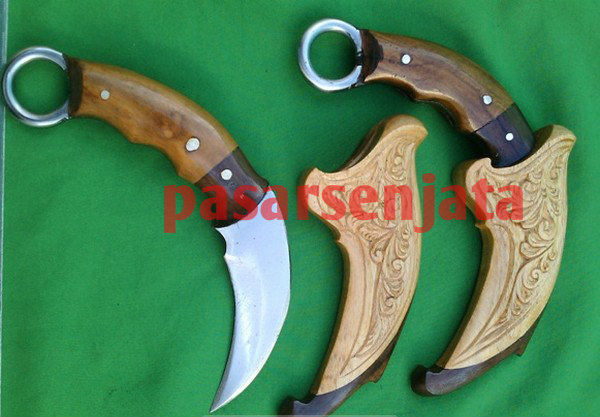Kerambit Krb-01
Adele Someone Like You Lyrics
JOKOWI TAK GUBRIS SOAL DUKUNGAN CAPRES
How Some Men Fake an 80-Hour Workweek, and Why It Matters
Imagine an elite professional services firm with a high-performing, workaholic culture. Everyone is expected to turn on a dime to serve a client, travel at a moment’s notice, and be available pretty much every evening and weekend. It can make for a grueling work life, but at the highest levels of accounting, law, investment banking and consulting firms, it is just the way things are.
Except for one dirty little secret: Some of the people ostensibly turning in those 80- or 90-hour workweeks, particularly men, may just be faking it.
Many of them were, at least, at one elite consulting firm studied by Erin Reid, a professor at Boston University’s Questrom School of Business. It’s impossible to know if what she learned at that unidentified consulting firm applies across the world of work more broadly. But her research, published in the academic journal Organization Science, offers a way to understand how the professional world differs between men and women, and some of the ways a hard-charging culture that emphasizes long hours above all can make some companies worse off.

Ms. Reid interviewed more than 100 people in the American offices of a global consulting firm and had access to performance reviews and internal human resources documents. At the firm there was a strong culture around long hours and responding to clients promptly.
“When the client needs me to be somewhere, I just have to be there,” said one of the consultants Ms. Reid interviewed. “And if you can’t be there, it’s probably because you’ve got another client meeting at the same time. You know it’s tough to say I can’t be there because my son had a Cub Scout meeting.”
Some people fully embraced this culture and put in the long hours, and they tended to be top performers. Others openly pushed back against it, insisting upon lighter and more flexible work hours, or less travel; they were punished in their performance reviews.
The third group is most interesting. Some 31 percent of the men and 11 percent of the women whose records Ms. Reid examined managed to achieve the benefits of a more moderate work schedule without explicitly asking for it.
They made an effort to line up clients who were local, reducing the need for travel. When they skipped work to spend time with their children or spouse, they didn’t call attention to it. One team on which several members had small children agreed among themselves to cover for one another so that everyone could have more flexible hours.
A male junior manager described working to have repeat consulting engagements with a company near enough to his home that he could take care of it with day trips. “I try to head out by 5, get home at 5:30, have dinner, play with my daughter,” he said, adding that he generally kept weekend work down to two hours of catching up on email.
Despite the limited hours, he said: “I know what clients are expecting. So I deliver above that.” He received a high performance review and a promotion.
What is fascinating about the firm Ms. Reid studied is that these people, who in her terminology were “passing” as workaholics, received performance reviews that were as strong as their hyper-ambitious colleagues. For people who were good at faking it, there was no real damage done by their lighter workloads.
It calls to mind the episode of “Seinfeld” in which George Costanza leaves his car in the parking lot at Yankee Stadium, where he works, and gets a promotion because his boss sees the car and thinks he is getting to work earlier and staying later than anyone else. (The strategy goes awry for him, and is not recommended for any aspiring partners in a consulting firm.)
A second finding is that women, particularly those with young children, were much more likely to request greater flexibility through more formal means, such as returning from maternity leave with an explicitly reduced schedule. Men who requested a paternity leave seemed to be punished come review time, and so may have felt more need to take time to spend with their families through those unofficial methods.
The result of this is easy to see: Those specifically requesting a lighter workload, who were disproportionately women, suffered in their performance reviews; those who took a lighter workload more discreetly didn’t suffer. The maxim of “ask forgiveness, not permission” seemed to apply.
It would be dangerous to extrapolate too much from a study at one firm, but Ms. Reid said in an interview that since publishing a summary of her research in Harvard Business Review she has heard from people in a variety of industries describing the same dynamic.
High-octane professional service firms are that way for a reason, and no one would doubt that insane hours and lots of travel can be necessary if you’re a lawyer on the verge of a big trial, an accountant right before tax day or an investment banker advising on a huge merger.
But the fact that the consultants who quietly lightened their workload did just as well in their performance reviews as those who were truly working 80 or more hours a week suggests that in normal times, heavy workloads may be more about signaling devotion to a firm than really being more productive. The person working 80 hours isn’t necessarily serving clients any better than the person working 50.
In other words, maybe the real problem isn’t men faking greater devotion to their jobs. Maybe it’s that too many companies reward the wrong things, favoring the illusion of extraordinary effort over actual productivity.
The Upshot provides news, analysis and graphics about politics, policy and everyday life. Follow us on Facebook and Twitter. Sign up for our weekly newsletter.
